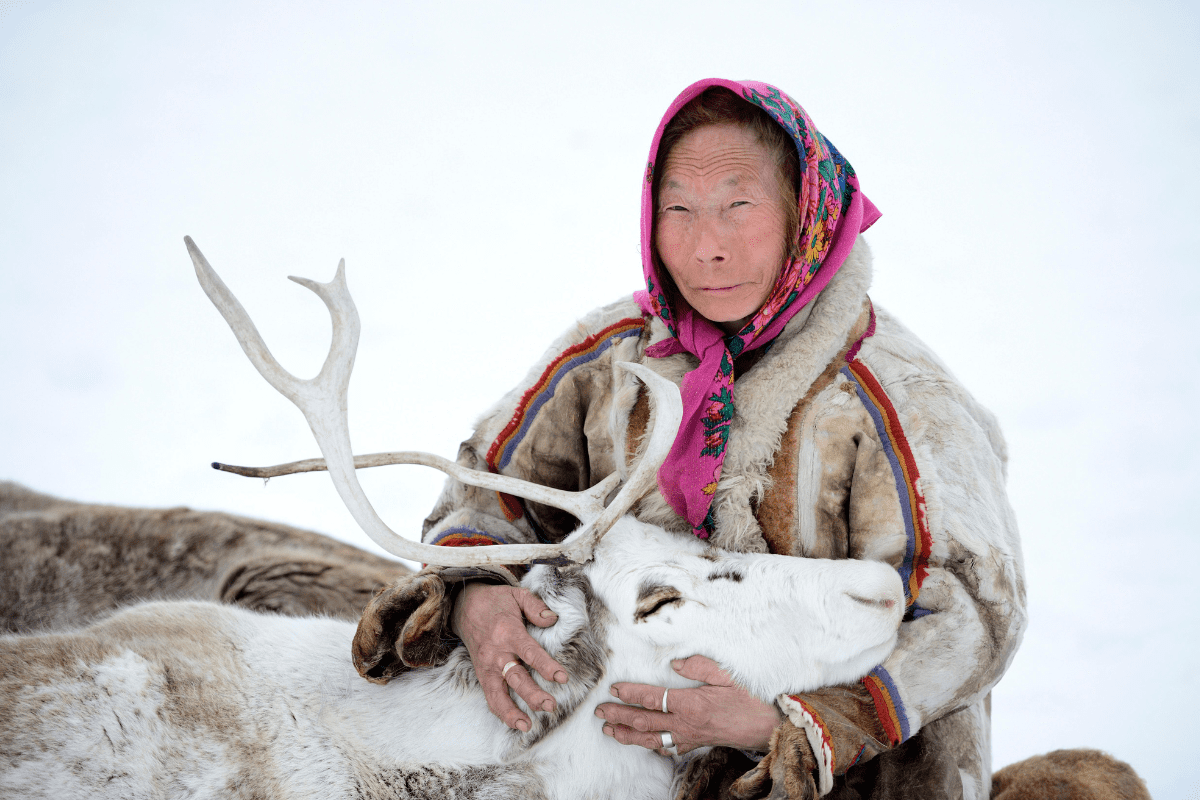I am dedicating December to the Deer Mother. This is a short introduction to the Deer Mother and my devotional practice.
Since 2021, I’ve dedicated every month to a different goddess. As a student/member of the Mt Shasta Goddess Temple, I followed the Temple’s devotional calendar last year. I didn’t form a connection with every goddess, and this year, I’ve built my own devotional calendar. The Temple dedicates December to the Deer Mother, and she’s remained in my pantheon.
Who is the Deer Mother?
To me, the Deer Mother represents an ancient, shamanic, solar, antlered female spirit of winter and a source of our modern Christmas traditions. She is associated with the reindeer, an animal with which humans have a long history. Reindeers survive in popular Christmas media as the animals that pull Santa Claus’ sleigh. These reindeer are female and possibly pregnant. Male reindeer shed their antlers in the autumn. Females keep them through the winter to protect themselves and their territory and feed so they can survive to give birth in the spring.
I most closely associate the Deer Mother with the Eurasian indigenous peoples of the circumpolar Arctic zone for whom the reindeer is important culturally and economically, particularly the Sámi and Nenets people. The Sámi are indigenous people of the region of Sápmi, which today encompasses large northern parts of Norway, Sweden, Finland, and Murmansk Oblast (Russia). The Nenets are indigenous to northern Arctic Russia. However, the Deer Mother is not a goddess of the Sámi or the Nenets any more than Santa Claus is an ancient pagan god of Germanic peoples.
There are goddesses associated with the Sun, Winter Solstice, and deer. Some of them appear antlered. Beaivi is the Sámi Sun goddess associated with Winter Solstice, motherhood, fertility, and reindeer. Others include Native American Deer Woman, the Irish Sadhbh, the Baltic Saulė, the Slavic Rozhanitsy, and the controversial Elen of the Ways. I’m not suggesting these goddesses are all the same; doing so would erase their individuality and cultural importance. They demonstrate an ancient human relationship expressed differently and uniquely according to our culture and environment.
In 2017, Danielle Prohom Olson wrote an excellent article called Doe, a Deer, a Female Reindeer: The Spirit of the Winter Solstice. I encourage you to read it. She describes the importance of the reindeer, various solar goddesses, explains the possible origins of Santa Claus’ red suit, why the red toadstool appears so often in Christmas imagery, and even includes a recipe.
Shamanic ancestors
The Deer Mother has additional meanings for me.
I’ve spent the last two years studying and adopting shamanic practices. I use ‘shaman’, ‘shamanism’, and ‘shamanic’ with ambivalence and some discomfort. I’m not a shaman or even a neoshaman. I am an animist, and like many Pagans, I engage in practices that can sometimes be described as shamanic. The Deer Mother connects me to those practices, to the traditions of my indigenous ancestors, and honours the shamanic teaching I’ve received.
My devotional practice
I honour the Deer Mother by building an altar for her. There’s a red altar cloth, a ceramic image of the Deer Mother, reindeer antlers, a stone with deer footprints, and a green candle. The altar also has some items that are always there: candles for my ancestors and fellow Priestesses and containers for burning incense and making daily offerings of water.
My morning practice involves making smoke and water offerings, reciting prayers, and meditating. This month, I will pray to the Deer Mother, meditate on her, use my rattle and drum, and study her. This is my second year with the Deer Mother, so I want to bring something new to her, like writing a prayer or developing correspondences.
Christmas and the Summer Solstice
As I honour the Deer Mother this month, this female spirit of the reindeer inspired by the ancient beliefs and traditions of Arctic people, it’s summer here in the Southern Hemisphere. At the time of writing, it’s 30°C (86°F).
While many Australians celebrate the Christmas season, Pagans celebrate the Summer Solstice. Growing up in South Florida, I never experienced a truly cold Christmas. So, a summery Christmas doesn’t feel strange to me, but December retains a certain energy of winter. While the warmer weather will get me out of the house more, December prompts me to rest internally. I’m wrapping up projects, looking back at the year, and thinking about my 2023 pursuits.

